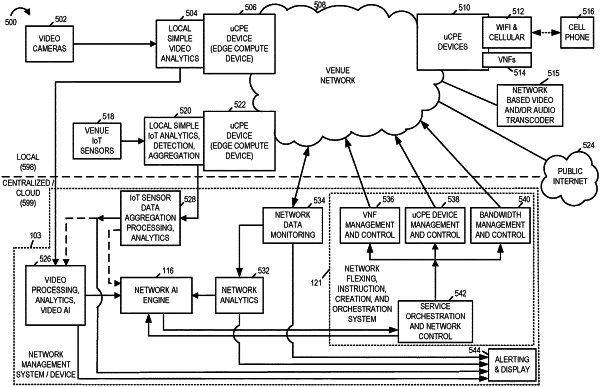| CPC H04L 41/16 (2013.01) [H04L 41/5022 (2013.01); H04L 47/783 (2013.01); H04L 47/788 (2013.01)] | 25 Claims |

|
1. A method of operating a management system in a communications network to manage communications services corresponding to a first venue, the method comprising:
storing event type traffic flow prioritization information in a storage device, said event traffic prioritization information indicating for different types of events, different data traffic flow priorities;
sending a command to one or more network devices to provide traffic prioritization during an event in accordance with the prioritization information corresponding to the type of event which is occurring;
receiving input information from the first venue indicating, for the first venue, at least two of: event type information, event schedule information, parking lot vehicle occupancy information, parking lot vehicle occupancy change information, information on the number of people in an area, information on the direction of movement in people in an area, or wireless device presence information;
determining, based on the received input information and one or more trained communications resource requirement models which were trained based on information from the first venue, predicted communications resources predicted to be needed by a venue network at the first venue for a first time interval; and
sending a command to one or more network devices to alter the communications resources provided to the first venue based on the predicted communications resources needed for the first time interval.
|